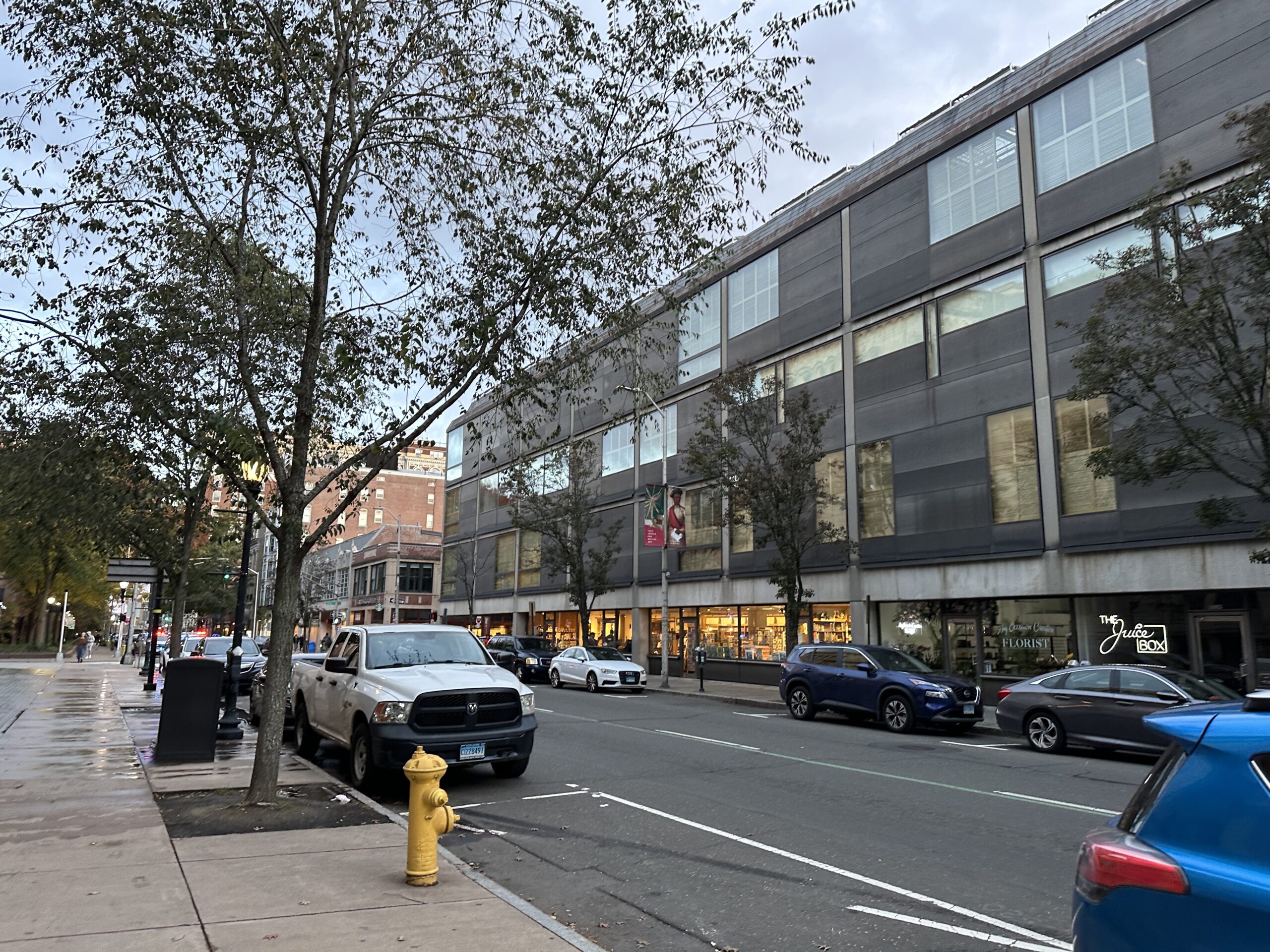Chapel Street’s conversion plans raises safety concerns for bikers
As the city plans to convert Chapel Street to two-way, cyclists warned that the design may come with traffic inefficiencies and safety risks.

Katya Agrawal, Contributing Reporter
Chapel Street is slated to be transformed into a two-way road with raised intersections and safer pedestrian crosswalks by 2029. But, biking advocates say the conversion, without adding bike lanes, may come at the expense of bicyclists’ safety.
Two years ago, the city hired consultants to help design drafts for converting several downtown streets into two-way. Currently, Chapel Street is one-way. The most updated plan would convert 1.6 miles of the street, from Ella T. Grasso Boulevard to College Street — though a concrete plan has only been developed for the portion of Chapel Street between College and York streets.
“Chapel Street two-way street conversion is part of a larger strategic goal of converting downtown streets from one-way to two-way configuration with the goal of improving mobility, safety, connectivity, consistency and more importantly redundancy in the street network,” Sandeep Aysola, director of the city’s Transportation, Traffic and Parking Department, told the News.
But that mobility might not extend to all users, bikers say.
In an email to the Safe Streets Coalition, activist Lior Trestman described how the current plan would prove hazardous for cyclists. As Chapel Street currently allows for one traffic direction, bikers can ride in the center of the right lane as cars pass on the left. With only one lane in each direction after the conversion, bikers would be forced to take the lane and slow down traffic — potentially facing the ire of drivers. Or, Trestman predicted, some cyclists may resort to the sidewalk, which is illegal in New Haven.
“This will make Chapel unbikeable for anyone but the most aggressive bikers,” he wrote.
Spenser Johnson, a biker visiting the Bradley Street Bike Co-Op, also emphasized the traffic inefficiency of streets without bike lanes. Cars either maneuver around bikes or slow down their pace, causing traffic pile ups.
“It’s a lose-lose for everyone,” Johnson said. “Whereas if you have a dedicated bike lane, even if it’s relatively narrow, it still keeps the flow of traffic while keeping the bikers safe.”
Another cyclist, Eric Geiger, said that he currently avoids Chapel Street if possible, even as a relatively strong biker himself. He pointed out that the danger is especially more pertinent for beginners and older people, and that fewer bike lanes could also discourage Yale students from engaging with their community due to reduced transportation options.
Geiger also cited the studied economic benefits of bike lanes over parking spaces, calling the current plan “disappointing.”
More gravely, as Trestman pointed out, the conversion plan strays from the Safe Routes for All Plan, a roadmap for citywide active transportation improvements that was both heavily invested in and adopted by the city. In the roadmap, Chapel Street remains one-way and has a protected bike lane on one side.
The plan also goes against the Complete Streets Ordinance, which mandates the accommodation of all road users’ safety and convenience, he argued.
“In my opinion our city administration is only willing to build active-mobility infrastructure in places where it has no drawbacks for anyone else, and unfortunately this means we will never see the progress we need,” Trestman wrote, referring to bikers. He ended the email with tributes to recent traffic violence fatalities and a call for citizens to help hold their leaders accountable.
During the design phase, one of the drafts the city considered included bike lanes, albeit without the protective gap the Safe Routes for All Plan called for. Due to the narrowness of Chapel Street, a protected bike lane there would require the removal of parking space.
Aysola and his team will receive public feedback in the coming months and may change the design accordingly.
Whether one-way or two-way traffic is better on Chapel Street remains uncertain. Elihu Rubin, associate professor of architecture and urban studies, explained that the nuance of deciding between one and two-way streets depends on the width, number of lanes and the residential or commercial nature of each street. While conversions to two-way streets will calm traffic, he said, one-way streets allow pedestrians to monitor oncoming traffic from one side more easily and can also preserve space for bike lanes and parking spaces.
“Conversions from one-way to two-way streets does reduce traffic capacity and may result in congestion until drivers learn to adjust,” Rubin wrote. “In general, two-way streets are probably better for vibrant commercial streets; but it depends on the nature of the street and if the conversion will sacrifice a lot of street parking.”
After finalizing the design, the city plans to begin construction in 2027 and finish by 2029.
Interested in getting more news about New Haven? Join our newsletter!







